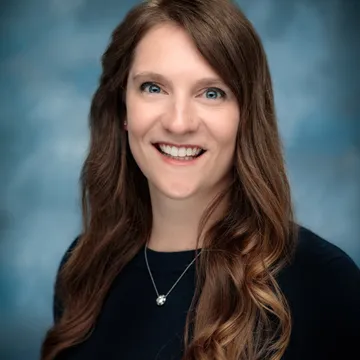e-Records Sustainability and Emerging Formats – 3 Tips from Andy Warhol
 Alaine Behler
•
October 10, 2021
Alaine Behler
•
October 10, 2021
October 10th is Electronic Records Day, an annual event sponsored by the Council of State Archivists (CoSA) to raise awareness among US state government agencies, the general public, related professional organizations, and other stakeholders about the crucial role that electronic records play in their world.
It is also an opportunity to thank CoSA and its members for their continuous efforts to advise records producers, create useful tools and resources, undertake research and grant projects to advance the profession, and advocate for records stewardship.
As part of this year’s event, CoSA released an infographic on emerging electronic formats. This document explores formats growing in popularity and identifies associated risks, benefits, and potential limitations of use. It is a timely reminder that the environments where electronic records are created, captured and managed are complex and dynamic and thus require monitoring and evolving preservation practices.

Why are file formats important to digital preservation?
What role do file formats play in electronic records preservation? Here’s a short story to help explain:
As part of the publicity for the launch of the Amiga 1000 in 1985, Commodore commissioned Andy Warhol to create some digital art on the new system which was being billed as a ‘multi-media’ computer. They sent him pre-release hardware and software so that he could learn how everything worked, and what might be possible.

At the launch event in Lincoln Center, Andy took a digital photograph of Debbie Harry and manipulated the photo live on stage.


The work was saved on floppies and filed away, eventually bequeathed as part of his estate to the Andy Warhol Museum.
In 2011, Carnegie Mellon University’s computer club searched the Museums’ collections and found the discs. They copied the data off the disks safely enough but couldn’t make sense of the files they found.
They realized that the hardware and software Warhol had used was “beta”, and that the format of the data had changed for the official release. They couldn’t access the files using an Amiga 1000, even if they had a working system. So, they set out to reverse engineer the format of the data, resulting in a three year research project and 18 new images - 18 original pieces of never-before-seen artwork from one of the most significant artists of the 20th Century.


3 Tips for e-Records Sustainability
So why am I telling this story of digital lost and found? Because there are at least three tips that can help you with strategies for electronic records sustainability.
Tip 1: Understand how data is encoded
This story helps us understand that the way data is encoded is often tightly bound up with other considerations. In this example, the data was written in a format that was explicitly written for a specific piece of software. As the software evolved, so too did the way it encoded data. These changes are not always backwards compatible, meaning older data can’t be understood by newer software.
Tip 2: Factor in obsolescence
The risk of obsolescence is that everyone eventually stops using the software that currently understands your data, or the vendor discontinues support, and eventually you become unable to render your files. In this example the risk includes the use of floppy discs, beta format, and the Amiga 1000. So if your electronic records need to outlive the system supporting them, you need to plan for migration or conversion before it is too late.
Tip 3: Bit-level preservation is not enough
The story also teaches that bit-level preservation is not enough to ensure future access. While the disks involved were in good enough condition when they were discovered, the data could not be rendered or interpreted. It isn’t enough to simply save 0s and 1s but also essential properties that will enable transformation and preservation over time and technologies.
This story highlights some of the unique challenges associated with electronic records management and digital preservation. I hope you enjoy Electronic Records Day - use it as an opportunity to engage and learn.
Look for more helpful resources and continue the conversation using CoSA’s Electronic Records Day hashtag, #ERecsDay.
Why Digitial Preservation? Why now?
“The best day to plant a tree was 20 years ago. The second best time is now.”
This proverb holds true to Digital Preservation as well. Today we are creating more digital information than ever before, with little idea of how future generations can access this in decades to come. This is not “tomorrow's problem”. It is today’s problem, for each of us, within our lifetime.
We’ve all seen the horror headlines of how digital disasters and technology obsolescence continues to erode our personal, organizational and societal memory. Poignantly, just 20 years on from 9/11, we now know that some of the most iconic news footage of this world changing event has been lost forever. How much of today’s digital record of the Great Pandemic of 2020 will be lost to us, and our children & grandchildren, looking back from 2040?
I firmly believe that we have a duty to ourselves and future generations to create a world where the preservation of our digital information can’t be an afterthought. The sooner we all make strides to Digital Preservation, the better off we’ll be now and in the future.
That’s why we’re making Digital Preservation simple, powerful and affordable for everyone. Our Preservica Starter is available to all, free forever. It is the seed for Digital Preservation that you can “plant” today.
I invite you to take your first steps to future-proofing your digital memory, with Preservica Starter today. Click below to begin.




